EVELYN SHARP
Nebraska’s WWII Women’s Service Pilots
In the throes of the Great Depression, amidst the red dust and grasshoppers borne by wind from the Oklahoma Panhandle, a young girl named Evelyn Sharp grew up in the north central region of the Nebraska Sandhills. It was there she assimilated the values of perseverance and commitment, and acquired a sense of adventure which would clearly define her character. Evelyn would not settle for the security of a loving husband and home. She wanted to fly.
Born humbly, she was adopted by a loving childless couple who moved often, finding opportunity wherever it seemed to be. In her adult life, Evelyn would learn that a woman known to her as Aunt Elsie was in fact her biological mother.
Evelyn was into every activity Ord High School had to offer, and she graduated in 1937 as the best girl athlete in the history of the school. During that time, an itinerant flight instructor, behind in his room and board bill at John Sharp’s rooming house, offered to give Evelyn free flying lessons. Her fate was sealed.
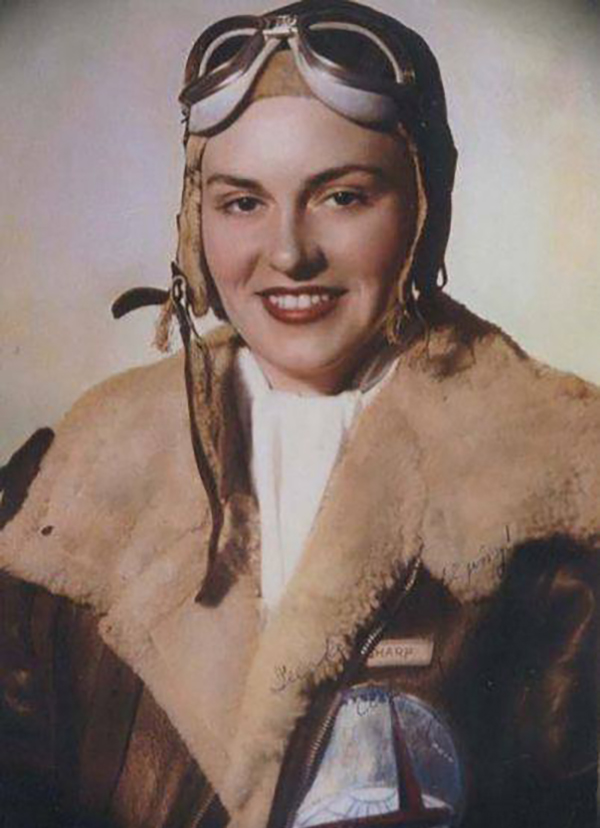
Evelyn took her first flight when she was fifteen years old and soloed one year later. The Ord businessmen put a down payment on a brand new Taylor Cub for her, and in return, she promised to repay them through promotional advertising during barnstorming tours in the North Loup Valley. It was a good deal for both.
Evelyn earned her private pilot certificate at seventeen and a commercial-transport at eighteen. During 1938 and 1939, she made appearances at county fairs, rodeos, and other community celebrations, giving over five thousand people a sky-ride. For many of them, this was their very first time in an airplane. By the age of twenty, she was one of ten women flight instructors in the United States. Evelyn taught flying to over 350 men in the Government’s pre-W.W.II Civilian Pilot Training Program in South Dakota and California. By this time, she was the sole support for her parents.
When the War Department organized the Women’s Auxiliary Ferrying Squadron in 1942, Evelyn qualified as its seventeenth member. She brought 2,968 hours to the Ferry Command, more than any of their other pilots.
Freeing male pilots for combat, Evelyn flew nearly every airplane in the Army Air Forces inventory. She only needed to complete transition to the B-17 before earning the highest rating then available to women.
That April day in 1944 during the Lockheed P-38 delivery to Newark, New Jersey, Evelyn’s plane lost power on takeoff. She did not survive the forced landing. It had been only nine years since she had taken her first flight off the pasture strip along the beautiful North Loup River in Valley County, Nebraska. But in that short time, she had left indelible memories in the hearts and minds of those who knew her.
For those who did not know her, there are impressive remembrances of a woman who has been called Nebraska’s most famous aviatrix: a P-38 propeller marking the site of the airport at Ord which is named in her memory, picture and print lining the walls of the fixed-base operations building, the Nebraska State Historical Highway Marker at the entrance to Sharp Field, the renaming of a portion of Highway 11 to Evelyn Sharp Road, the yearly celebration of Evelyn Sharp Days, the filming of the biographical documentary “Sharpie: Born To Fly,” and the publication of her biography, Sharpie: The Life Story of Evelyn Sharp – Nebraska’s Aviatrix.
Evelyn did not let role expectations, struggles, or disappointments stand in her way. She earned the reputation of being one of the finest pilots in the nation, but more importantly she had been kind to her family and friends. She did not forget the roots of her upbringing or what others had done for her. In 1941, when a Bakersfield Californian newspaper reporter asked her if there were a place for women in aviation if war broke out, she had replied without hesitation: “Certainly! There’s plenty of things a woman flier can do to help the aviation branches of the services. I’ll do everything I can.” For Evelyn Sharp, that statement became prophetic. A woman who simply loved to fly and loved her country could do no more. She had given her life for that country.
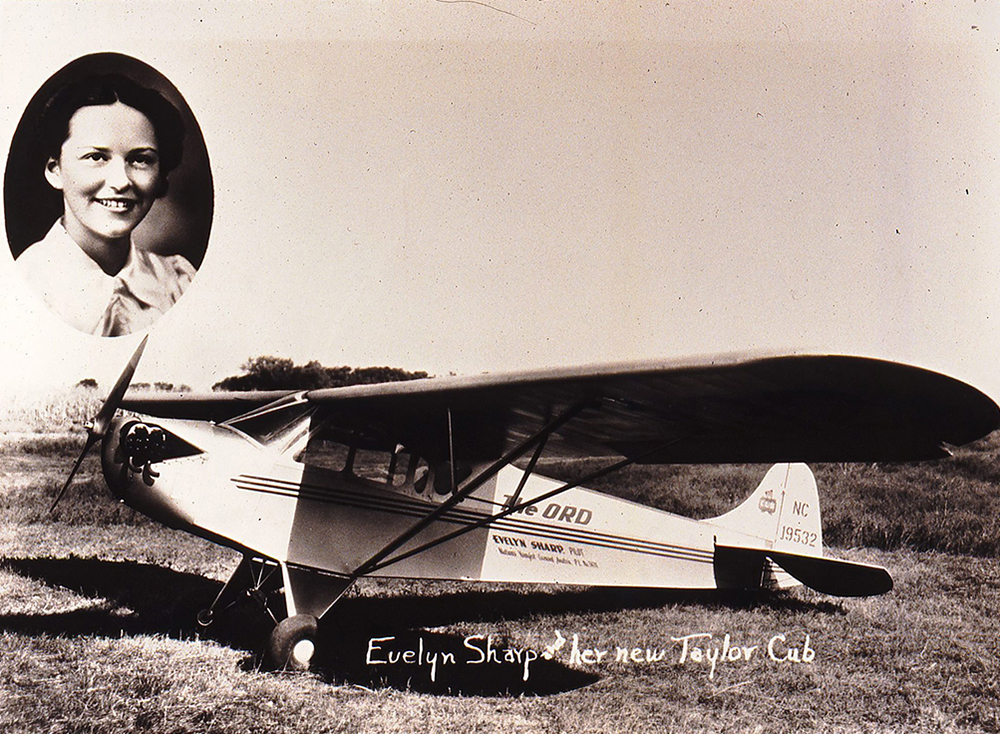
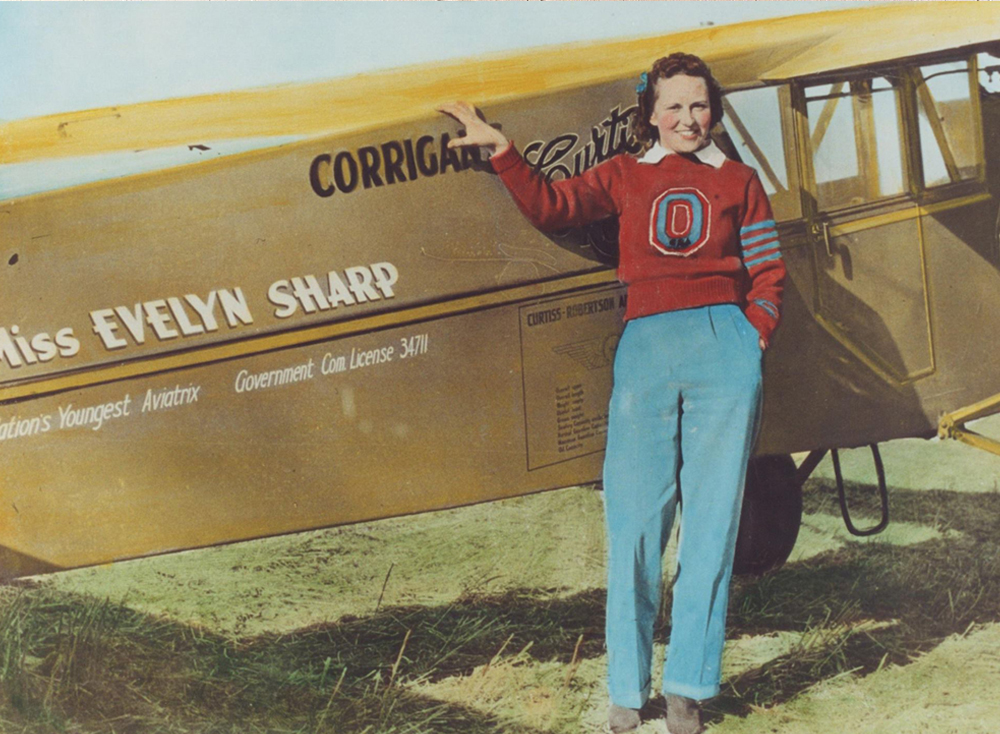
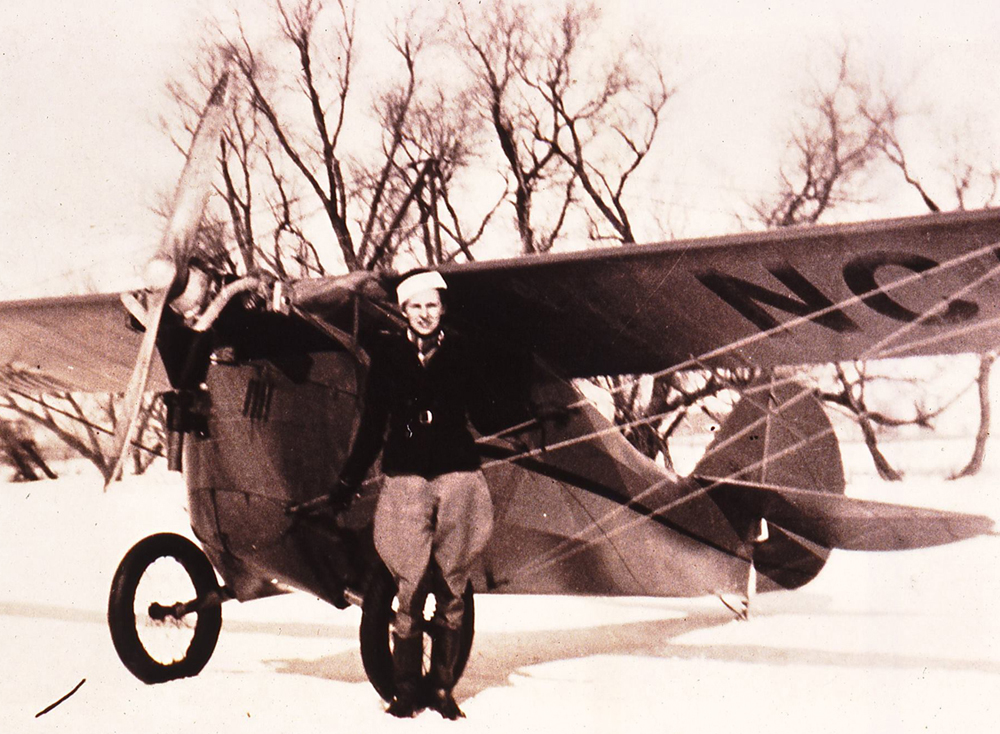
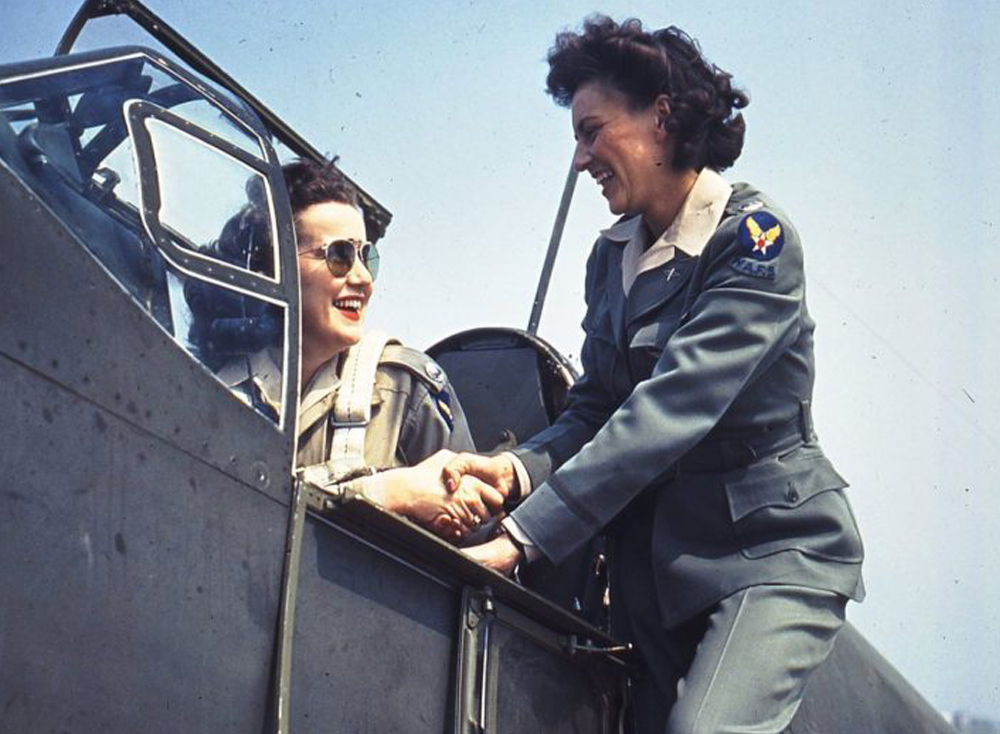
Nebraska’s WWII Women’s Service Pilots

On Saturday, June 12, 2010, a monument to the nineteen Nebraska Women Airforce Service Pilots was unveiled at a dedication ceremony in the Veterans Memorial Garden, Lincoln, Nebraska. It had been almost 66 years since the organization had been disbanded, and the women had declared Nebraska their home. They had received little if any recognition for their efforts and contributions to the War effort.
Three years ago, a member of the Veterans Memorial Garden Committee approached Diane Bartels and suggested the Garden needed to honor the women pilots. The Garden has over two dozen monuments, remembering and honoring all veterans of all branches of services throughout the history of the United States.
Through the help of the WASP Archives at Texas Woman’s University in Denton and the Women In Military Service For America Memorial in Washington, D. C., Ms. Bartels began the research to locate family and friends. When she went to Washington D.C. in March to accept the Congressional Gold Medal for Evelyn Sharp, the WWII ferry pilot from Ord, Nebraska, more connections were made.
The front of the polished black granite monument, in addition to their respective hometowns, bears the names the women held when they applied to the WASP.
An engraving of a B-17 escorted by a P-38 and P-51 “fly” above those names. The insignia and wings of the Women’s Auxiliary Ferrying Squadron and the Women Airforce Service Pilots are engraved on the front edge of the attached bench.
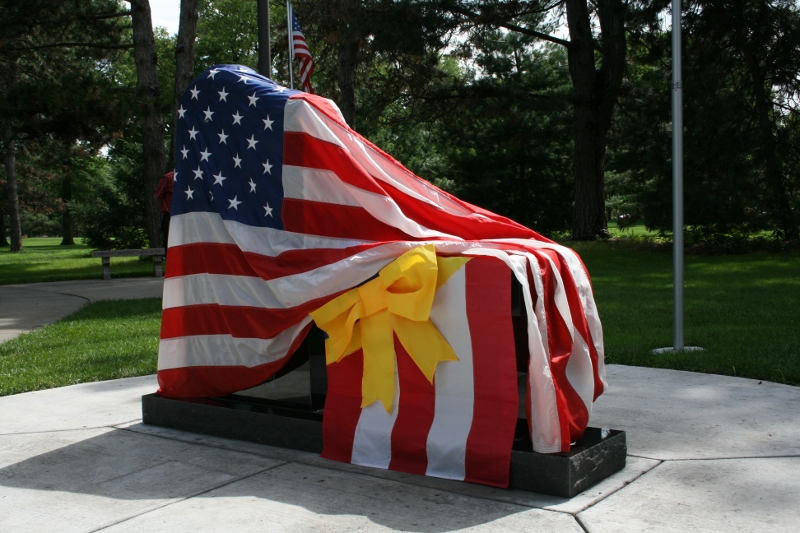
On the back of the monument, in addition to the engraved front and back of the Congressional Gold Medal, is an abbreviated history of the WASP:
Between 1942 and 1944, 1,102 women served as civilian service pilots for the U.S. Army Air Forces. They participated in instructor training, towing targets for air-to-air gunnery and ground-to-air anti-aircraft practice, transporting personnel and cargo, and ferrying airplanes to training fields and embarkation points. This freed male pilots for combat.
The original group, the Women’s Auxiliary Ferrying Squadron (WAFS), proved women could fly the Army airplanes. Evelyn Sharp from Ord, Nebraska, was the seventeenth of its twenty-eight members. In 1943, the women pilots were re-designated Women Airforce Service Pilots (WASP). By December, 1944, when they were unceremoniously disbanded, the women had logged over sixty million miles in military airplanes.
In 1977, Congress granted veteran status to this group of pioneering women whose contributions had largely been unrecognized. Their ground-breaking steps, however, had paved the way for all women who serve valiantly in the U.S. military today. On March 10, 2010, the Women Airforce Service Pilots were awarded the Congressional Gold Medal for their service in World War II.
On the day of the dedication, low ceilings kept the P-38 and the BT-13 safe at home in their hangars. However, the local PT-17, AT-6, and the P-51 thrilled hundreds of attendees with their fly-over. In remarks made during the program, Bartels shared anecdotes of each of the nineteen women who left the security of home and went off to serve their country in a manner no American woman had done so previously.
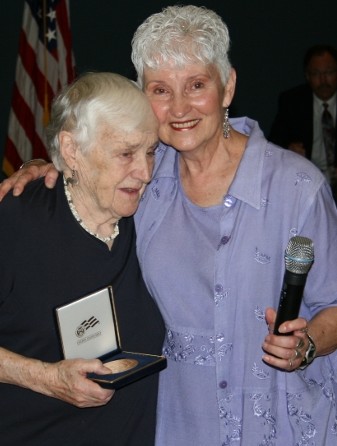
Mary Williamson from Omaha, (pictured with Diane Bartels) a trainee in the last class, was the only one of the four still living with Nebraska ties who was able to attend the dedication. When Ms. Bartels presented her with a Congressional Gold Medal, everyone spontaneously stood and offered their appreciation for her service with resounding applause.
When Mary could speak, she acknowledged all her “sisters in the sky.”
“I wish they could be here,” Mary said reflectively.
Many of those in attendance felt the same way!
The Women’s Airforce Service Pilots
Between 1942 and 1944, 1,102 women served as pilots for the U.S. Army Air Forces. They participated with instructor training, towing targets for air to air gunnery and ground to air anti-aircraft practice, transporting personnel and cargo and ferrying airplanes to training fields and embarkation points. This freed the male pilots for combat.
The original group was called the Women’s Auxiliary Ferrying Squadron or WAFS. In 1943 they were re-designated Women Airforce Service Pilots or WASP. By December of 1944 the group had unceremoniously been disbanded. During that short time frame, the ladies had logged over 60 million miles in military aircraft. At the final graduation ceremony in Sweetwater, Texas, General “Hap” Arnold spoke of their exemplary safety and delivery record.
In 1977, Congress granted veteran status to this group. This allowed them to receive medical benefits and the American Campaign Medal and the WWII Victory Medal. But most important to these ladies was that they could now be buried in our Nation’s cemeteries and their caskets could bear the United States Flag. On March 10, 2010 the Women Airforce Service Pilots were awarded the Congressional Gold Medal for their service in World War II.
Nineteen of those women came from Nebraska. They are: Dorothy L. Bancroft, Mary B. Beecham, Lois V. Boien, Lois A. Bristol, Grace “Betty” E. Clements, Mary A. Jershin, Eileen “Ikey” A. Kealy, Marybelle J. Lyall, Esther L. Mueller, Roberta E. Mundt, Margaret “Peggy” L. Nispel, Millicent A. Peterson, Alice L. Riss, Evelyn G. Sharp, B. Kristin Swan, Helen A. Turner, Isabel E. Tynon, Jane E. Waite and Mary E. Williamson. All but four of these ladies are deceased, they are Lois A Bristol Young, B. Kristin Swan Lent, Millicent A. Peterson Young and Dr. Mary E. Williamson.
